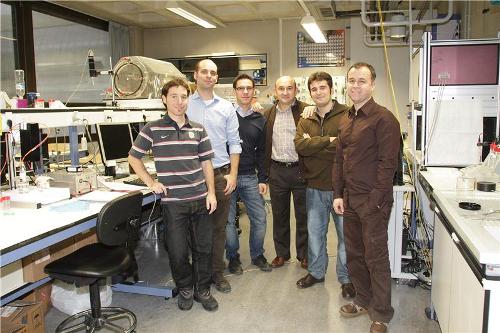A team of scientists from the UPNA-Public University of Navarre has created a novel nanoparticle-based coating for use in construction materials.
 From left to right, the researchers Aitor Urrutia, Javier Goicocechea, Miguel Hernáez, Ignacio Matías, Patxi Arregui and Pedro Rivero
From left to right, the researchers Aitor Urrutia, Javier Goicocechea, Miguel Hernáez, Ignacio Matías, Patxi Arregui and Pedro Rivero
These nanoparticles are capable of interacting with sunlight due to their photocatalytic effect, thus prompting a series of chemical reactions to eliminate air pollutants, particularly the nitrogen oxides and the monoxides. This coating is the final product of the Ecofotomat project that also involved Obras y Servicios TEX, a construction company, and the L'Urederra R+D Centre.
The construction material used in this project is the concrete provided by TEX. L’Urederra produces and modifies the nanoparticles in order to integrate them into the coatings. The project is aimed at developing a commercial product that resembles paints at an affordable cost.
Javier Goicoechea, one of the researchers, informed that the final product is an ultrathin coating with a thickness of below 1 µm and conforms the profile of the concrete, which is typically very porous in nature. The coated porous surface gets activated when the sunlight falls on it. The coating can degrade certain chemical compounds when they adhere to the treated surface, thus hampering the spread of fungi, bacteria and much more.
The researchers have developed a matrix, which is durable and strong enough to stay in place by immobilizing the nanoparticles. To estimate the reduction in gases, the researchers applied the coating after the application of a bluish ink onto the concrete’s surface. What they observed was the coating attacked and reduced all the air pollutants into their compound form. It is estimated that the coating can reduce the emissions of carbon monoxides, hydrocarbons, and nitrogen oxides by 75%, 80%, and 90%, respectively.